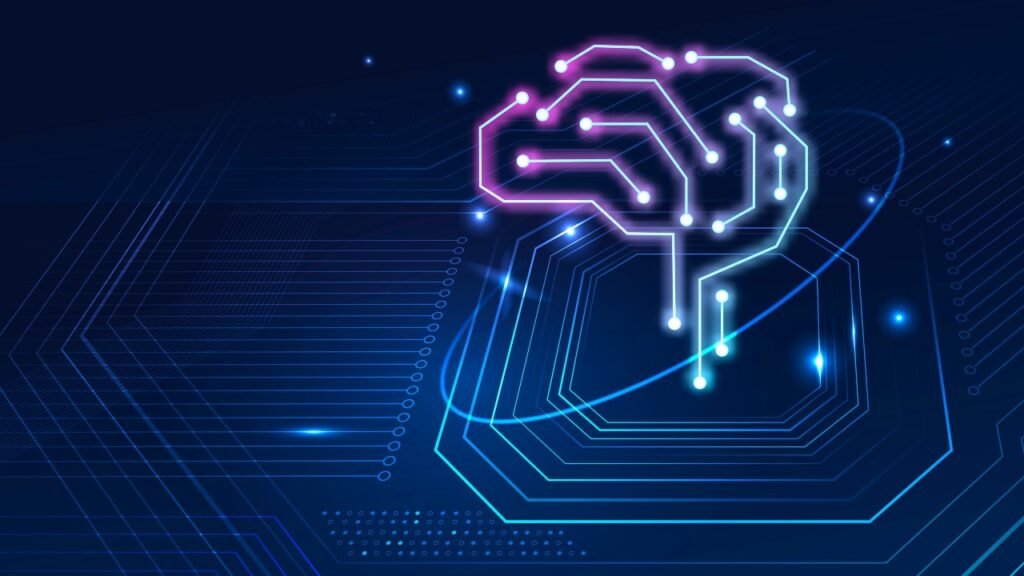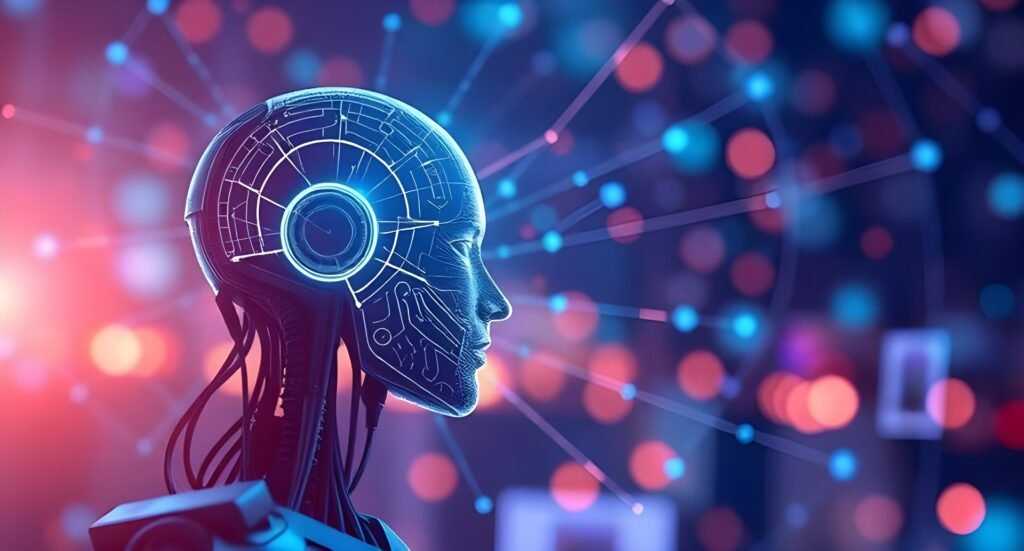|
Getting your Trinity Audio player ready...
|
Artificial Intelligence (AI) has grown from a niche academic field to a transformative global force, reshaping industries and societies across continents. This article examines the historical evolution of AI, its development across major regions – the United States, Europe, and China – and its trajectory as we approach 2025, drawing insights from high-authority sources such as The New York Times, The Economist, and Reuters.
What is AI?
Artificial Intelligence, often abbreviated as AI, refers to the simulation of human intelligence in machines designed to think, learn, and adapt. It encompasses various subfields, including machine learning, natural language processing, computer vision, and robotics. At its core, AI aims to automate tasks that typically require human cognition, such as decision-making, problem-solving, and pattern recognition.

What Can You Do With AI?
AI’s applications span a wide range of industries and everyday life. In healthcare, AI assists in diagnosing diseases, personalizing treatment plans, and accelerating drug discovery. In finance, it powers fraud detection systems and algorithmic trading. Retail businesses use AI to enhance customer experiences through personalized recommendations and chatbots. Additionally, AI has revolutionized transportation with autonomous vehicles and smart traffic management. From creative industries to manufacturing and beyond, the potential uses of AI continue to expand, shaping the future of work and innovation.
The Origins of AI
The journey of AI began in the mid-20th century, catalyzed by the theoretical foundations laid by mathematicians like Alan Turing. In the United States, the 1956 Dartmouth Conference marked the formal birth of AI as a field, attracting visionaries such as John McCarthy and Marvin Minsky. Early efforts focused on symbolic reasoning and problem-solving, with notable developments including IBM’s Deep Blue defeating chess champion Garry Kasparov in 1997.
Meanwhile, Europe’s AI endeavors, particularly in the UK, Germany, and France, were driven by research in robotics and computational linguistics. China, although initially lagging, began integrating AI into its national research agenda by the late 1990s, with a focus on industrial applications.
The United States: The Pioneer and Innovator
American companies such as Google, Microsoft, and OpenAI have consistently led AI innovation, backed by Silicon Valley’s venture capital ecosystem. The launch of OpenAI’s ChatGPT in late 2022 marked a paradigm shift in natural language processing, spurring a global race in generative AI. Google’s DeepMind achieved significant milestones like AlphaFold’s protein-folding predictions, demonstrating AI’s potential in healthcare and biotechnology.
Policy-wise, the U.S. government increased AI funding under the CHIPS and Science Act, aiming to secure its technological leadership. However, concerns about ethical governance and data privacy have spurred ongoing debates, particularly as AI influences areas such as surveillance and military applications.
Europe: The Ethical Custodian
Europe’s AI strategy is characterized by a strong emphasis on ethical standards and regulatory frameworks. The European Union introduced the AI Act in 2021, aiming to create a harmonized approach to AI governance. Companies like DeepMind (acquired by Google but founded in the UK) and Siemens have pioneered advancements in AI for healthcare, manufacturing, and climate change mitigation.
European nations have also excelled in AI ethics, spearheading initiatives like the High-Level Expert Group on AI, which promotes transparency and accountability. However, the region faces challenges in scaling AI startups due to fragmented markets and comparatively lower investment levels.
China: The Pragmatic Challenger
China’s AI evolution is driven by its “AI 2030” strategic plan, which aims to position the country as a global leader. Tech giants like Baidu, Alibaba, and Tencent (collectively known as BAT) have invested heavily in AI research, focusing on applications in e-commerce, autonomous driving, and facial recognition.
Supported by state-driven policies and abundant data, China has made significant strides in AI adoption. However, its approach has sparked global concerns over privacy and surveillance, particularly in the context of social credit systems and facial recognition technologies.

The AI Landscape in 2024
By the end of 2024, the global AI ecosystem has become increasingly competitive and collaborative. Noteworthy developments include:
- Generative AI Proliferation: ChatGPT and its competitors have matured, offering multi-modal capabilities that integrate text, image, and video generation.
- AI Regulation: Europe’s AI Act has set a global benchmark, prompting the U.S. and China to adapt their governance models.
- AI for Sustainability: Companies across regions are leveraging AI to address climate challenges, from optimizing renewable energy grids to enhancing carbon capture technologies.
- Geopolitical Rivalries: The U.S. and China remain locked in a technological arms race, with AI at its core, while Europe positions itself as a mediator prioritizing ethical development.
What to Expect in 2025: Key Trends and Predictions
Despite geopolitical tensions, 2025 is likely to witness increased collaboration in areas like climate change and healthcare. Shared challenges, such as pandemics and energy crises, will necessitate cooperative AI solutions.
Ethical AI at Scale
The emphasis on ethical AI will grow, with Europe’s regulatory frameworks influencing global norms. American and Chinese companies will likely adopt more transparent practices to align with international expectations.
AI Democratization
The proliferation of open-source AI models will enable smaller enterprises and developing nations to harness AI’s potential, reducing technological disparities.
Quantum AI Breakthroughs
Quantum computing, a field closely tied to AI, is expected to achieve significant breakthroughs, particularly in optimization problems and cryptography.
A Future Defined by Balance
The evolution of AI reflects the diverse priorities and strengths of its leading regions. The United States remains a hub of innovation, Europe champions ethical standards, and China excels in rapid adoption and scalability. As we look to 2025, the challenge will be to balance competition and collaboration, ensuring AI benefits humanity while mitigating its risks.










equilibrado de ejes
Equipos de calibración: importante para el operación uniforme y productivo de las máquinas.
En el mundo de la ciencia avanzada, donde la eficiencia y la fiabilidad del dispositivo son de máxima significancia, los equipos de calibración desempeñan un tarea crucial. Estos aparatos específicos están diseñados para equilibrar y asegurar partes dinámicas, ya sea en maquinaria manufacturera, medios de transporte de desplazamiento o incluso en aparatos hogareños.
Para los profesionales en mantenimiento de sistemas y los profesionales, utilizar con aparatos de equilibrado es fundamental para garantizar el funcionamiento suave y confiable de cualquier sistema dinámico. Gracias a estas opciones innovadoras innovadoras, es posible limitar significativamente las vibraciones, el zumbido y la esfuerzo sobre los soportes, prolongando la tiempo de servicio de piezas caros.
También importante es el función que desempeñan los equipos de equilibrado en la atención al comprador. El soporte técnico y el reparación continuo utilizando estos sistemas habilitan dar prestaciones de alta excelencia, aumentando la bienestar de los consumidores.
Para los propietarios de negocios, la contribución en equipos de ajuste y dispositivos puede ser importante para incrementar la efectividad y productividad de sus equipos. Esto es especialmente significativo para los dueños de negocios que administran modestas y intermedias negocios, donde cada aspecto importa.
Además, los dispositivos de calibración tienen una extensa utilización en el campo de la fiabilidad y el gestión de nivel. Habilitan identificar potenciales errores, evitando reparaciones elevadas y problemas a los sistemas. Incluso, los información recopilados de estos sistemas pueden utilizarse para maximizar métodos y incrementar la reconocimiento en buscadores de consulta.
Las áreas de uso de los aparatos de balanceo cubren diversas industrias, desde la fabricación de vehículos de dos ruedas hasta el monitoreo de la naturaleza. No influye si se habla de extensas fabricaciones manufactureras o pequeños espacios hogareños, los sistemas de equilibrado son fundamentales para garantizar un funcionamiento eficiente y libre de paradas.